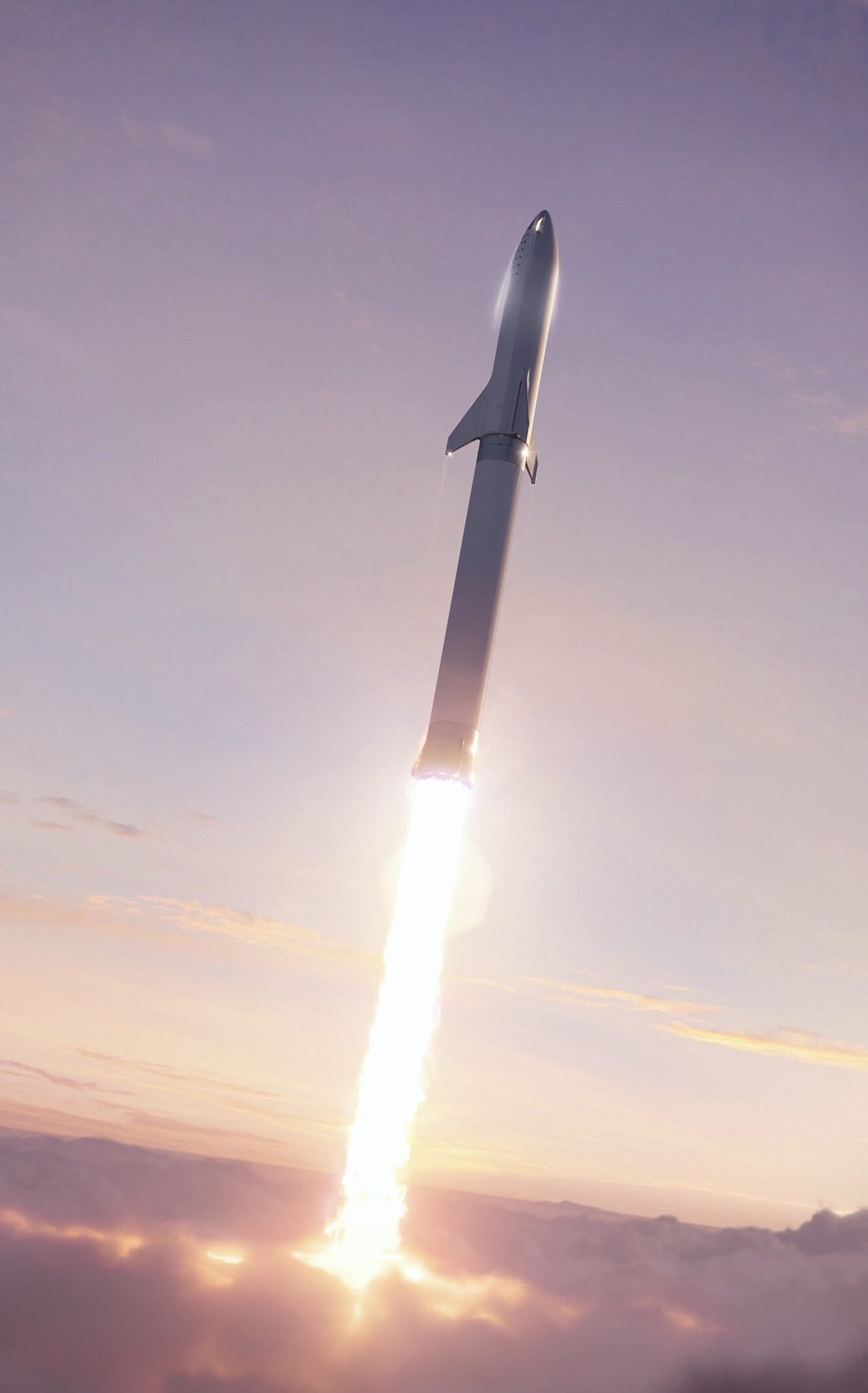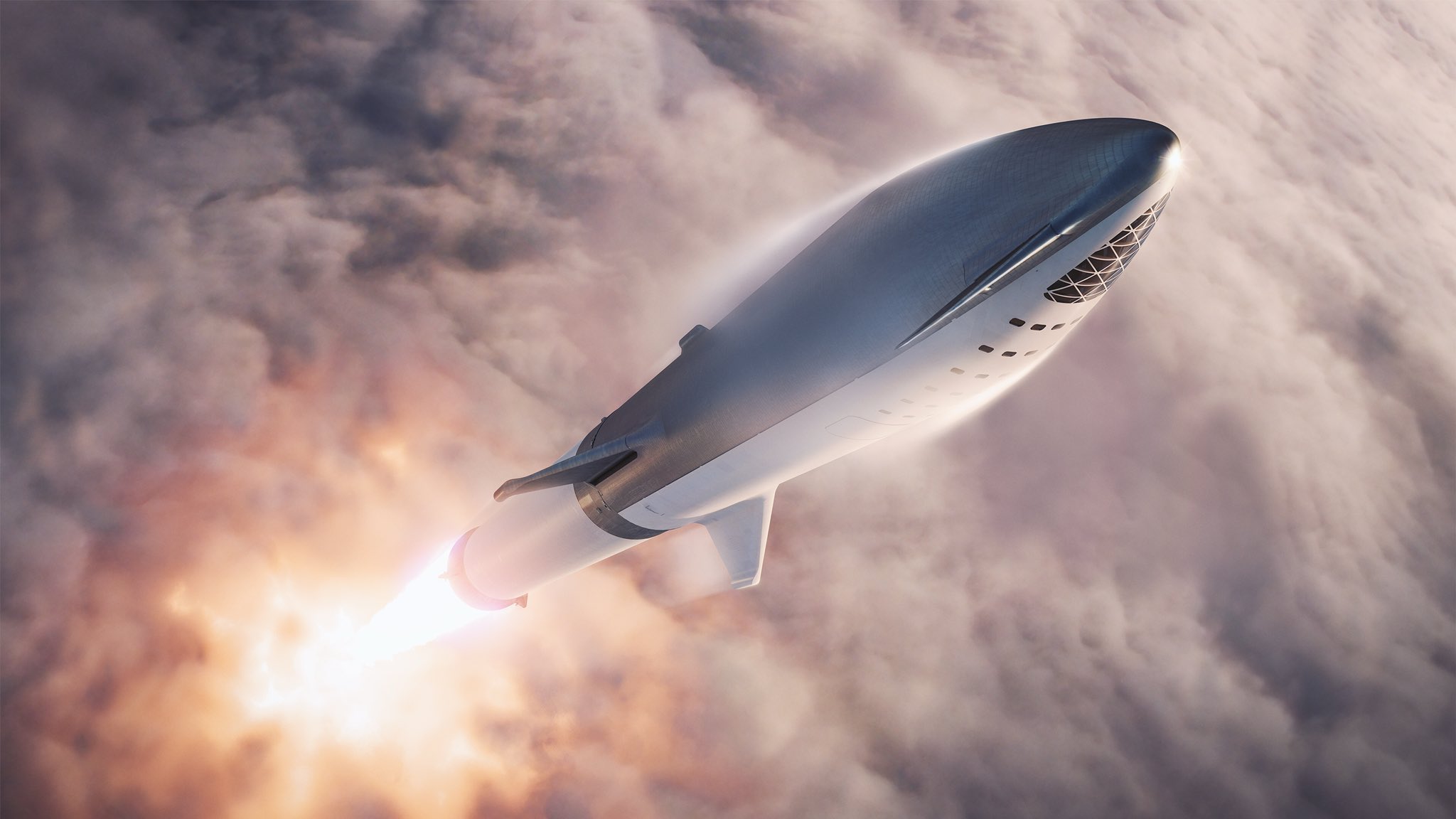The mobile launcher being moved to 39B this week has left me wondering about the BFR and integration. Payload integration has traditionally been done vertically, I think, and that's led to some issues with certain F9 payloads. I seem to recall early ITS renders had the ship being loaded vertically. I have to wonder, though, and I doubt there are answers at this stage, but how will the BFR be moved to the launch pad? How and when will the BFS be mounted? How will payloads be integrated into the BFS? Definitely not expecting answers to these questions, just things to think about until spacex reveals their designs.
Welcome to Tesla Motors Club
Discuss Tesla's Model S, Model 3, Model X, Model Y, Cybertruck, Roadster and More.
Register
Install the app
How to install the app on iOS
You can install our site as a web app on your iOS device by utilizing the Add to Home Screen feature in Safari. Please see this thread for more details on this.
Note: This feature may not be available in some browsers.
-
Want to remove ads? Register an account and login to see fewer ads, and become a Supporting Member to remove almost all ads.
You are using an out of date browser. It may not display this or other websites correctly.
You should upgrade or use an alternative browser.
You should upgrade or use an alternative browser.
The mobile launcher being moved to 39B this week has left me wondering about the BFR and integration. Payload integration has traditionally been done vertically, I think, and that's led to some issues with certain F9 payloads. I seem to recall early ITS renders had the ship being loaded vertically. I have to wonder, though, and I doubt there are answers at this stage, but how will the BFR be moved to the launch pad? How and when will the BFS be mounted? How will payloads be integrated into the BFS? Definitely not expecting answers to these questions, just things to think about until spacex reveals their designs.
Tl;dr pure speculation: jumbo transporter, horizontal initial integration, rotating satellite mount if needed.
Long version:
From the renderings, the BFR (first stage) lands back on it's launch mounts after each launch so it remains vertical (until serviced). Initial transport would be horizontal via barge from Port of LA. Need a bigger transporter (and boat).
BFS gets craned onto BFR for refuel missions. For the satellite version, payload mounting could be vertical (given enough room). However, BFS will have suffucient structure to handle being horizontal, especially given the aero braking delta wing design.
In the case of horizontal mating, they could put in a rotating satellite mount system so that the satellite is always vertical as the BFS rotates from horizontal to vertical.
Which also means they could make the grand daddy of horizontal transporters for the combined system. Comes in handy for system bring up and such, then no need for a VAB sized structure (at least vertically). In that senario, the launch mounts may detach from the transporter and fasten to the pad followed by removal of the strong back portion, or the transporter and lauch mounts attachment points are non interfering.
Payload integration has traditionally been done vertically, I think, and that's led to some issues with certain F9 payloads.
Yes, and very unlikely. Big, single deployable payloads are almost if not always mounted on the launch adapter vertically. Without the nauseating details, its all about getting the circular separation system installed properly (specifically, getting the right tension in the clampband). As @mongo notes, there's a big piece of ground equipment that tilts 'stuff' over to a horizontal orientation for launcher assembly. In the case of Falcon, that 'stuff' is the payload, fairing, and adapter. In other cases 'stuff' its the spacecraft and often the upper stage that are tilted down and then encapsulated (like the Russians do, as well as a least a few others, like Antares). Its ok to do most of the launcher assembly mates horizontally as they're just dumb bolted joints as opposed to the complex single point failure of the separation system.
***Note that the above does not always apply for smaller payloads--they often have non-circular separation systems that are more forgiving when it comes to mating orientation.
e-FTW
New electron smell
Those images make me feel like we are getting closer to the ships of science-fiction:
Elon Musk on Twitter
Elon Musk on Twitter


Elon Musk on Twitter
Elon Musk on Twitter


Last edited:
The changes in the BFR really took me by surprise. It seems that the BFR is now significantly more complex and harder to build. Actuator fins/wings/whatever aft and forward!
When Elon said that what looks like a vertical stabilizer in fact has no aerodynamic purpose and it’s only function is a landing leg I had to laugh. I love the look of the new fins; just like the rockets in 50’s sci-fi stories.
I love the look of the new fins; just like the rockets in 50’s sci-fi stories.
When Elon said that what looks like a vertical stabilizer in fact has no aerodynamic purpose and it’s only function is a landing leg I had to laugh.
JohnSnowNW
Active Member
e-FTW
New electron smell
My thought exactly when I saw the number of moving wingfinflaps. Complexity! But hey, this is the company that lands rockets like you open a door (slight exaggeration).The changes in the BFR really took me by surprise. It seems that the BFR is now significantly more complex and harder to build. Actuator fins/wings/whatever aft and forward!
My favorite part of the whole thing is when he said the new design reminded him of Tintin's rocket. Yes!When Elon said that what looks like a vertical stabilizer in fact has no aerodynamic purpose and it’s only function is a landing leg I had to laugh.I love the look of the new fins; just like the rockets in 50’s sci-fi stories.

Ok, that thing was single-stage-to-orbit, but still: it was big, and landed retro-propulsively on three (3!) legs.
More info here, on this awesome cartoon published in 1950. That's right, 1950: Destination Moon (comics) - Wikipedia
Electroman
Well-Known Member
I have a copy of all Tin-Tin and Asterix books !!
I was intrigued by the fact that the old design would have worked but Elon nudged the design team into this design for aesthetic reasons. There are some design advantages but, as he mentioned, it would have worked the other way as well.
So this is a Moon centered design and for a Mars mission they would likely make bigger nozzles.
So this is a Moon centered design and for a Mars mission they would likely make bigger nozzles.
Designs for the new BFR:
human Mars: Official schematics for Big Falcon Rocket v2018 by Elon Musk, SpaceX
human Mars: Official schematics for Big Falcon Rocket v2018 by Elon Musk, SpaceX
While the fin/wing actuators are increased complexity, my guess is the landing legs with “pads” on the ends are less complex to make than the previous BFR design with extending legs.There are some design advantages but, as he mentioned, it would have worked the other way as well.
I assume the “pads” are attached to some sort of shock absorber.
What I want to know is, what powers the fin/wing actuators during re-entry? Elon stated that they will have tremendous forces acting on them and they will require a lot of energy to operate.
While the fin/wing actuators are increased complexity, my guess is the landing legs with “pads” on the ends are less complex to make than the previous BFR design with extending legs.
I assume the “pads” are attached to some sort of shock absorber.
What I want to know is, what powers the fin/wing actuators during re-entry? Elon stated that they will have tremendous forces acting on them and they will require a lot of energy to operate.
I know he said lots of force, but did he say lots of energy?
If the pivot point is in a neutralish place, the rotational force needed might not be so bad (as opposed to the overall loading on the fin). Even if lots of force, the movements are likely smallish, so maybe the energy required is not so high. Hydraulics driven by turbopump would give plenty of both, electric motor plus large accumulator, or just an electric ball screw. Reuse of current F9 fin/ motor gimbal system?
Nikxice
Active Member
The newly sized 2018 BFR and recent size discussion in the Lunar BFR thread got me looking back at the subject speculated this past Feb/Apr, starting with Grendal's post #63.
BFR/BFS - General Development Discussion
While the 9m diameter BFR is certainly wide, the Saturn V had a girth of 10m. Any visit to KSC has to include the Saturn V Center. A sight to behold, the five F-1 engines dramatically accentuate this massive diameter. The king of wide body rockets has to be the failed Russian NI rocket, which measured 17m at the base, but still comes up short at 105m.
Elon hinted in April that the 2018 BFR might be stretched a little from the 2017 iteration. He wasn't kidding. The total length will be increasing from 106m to 118m (First stage 58m to 63m, BFS 48m to 55m). Now we know that at 387ft the two stage BFR will soon be the worlds tallest rocket, 24ft taller than a Saturn V.
BFR/BFS - General Development Discussion
While the 9m diameter BFR is certainly wide, the Saturn V had a girth of 10m. Any visit to KSC has to include the Saturn V Center. A sight to behold, the five F-1 engines dramatically accentuate this massive diameter. The king of wide body rockets has to be the failed Russian NI rocket, which measured 17m at the base, but still comes up short at 105m.
Elon hinted in April that the 2018 BFR might be stretched a little from the 2017 iteration. He wasn't kidding. The total length will be increasing from 106m to 118m (First stage 58m to 63m, BFS 48m to 55m). Now we know that at 387ft the two stage BFR will soon be the worlds tallest rocket, 24ft taller than a Saturn V.
This makes sense. The military is considering the implications that BFR brings to the table in moving troops, cargo, and assets around the world and into space.
US Air Force explores space-based cargo operations, confirms talks with SpaceX
US Air Force explores space-based cargo operations, confirms talks with SpaceX
Interesting but wouldn't that suffer from the same problem of potential misidentification that commercial rocket-based transport has, only worse? Is that ballistic missile a transport or an attack? Surely they've considered that risk and how to mitigate it so I wonder what they're thinking.
Nikxice
Active Member
An interesting update on the BFR site construction from a local South Texas paper. I hadn't realized that there we're some delays created by the need for "soil surcharging". A soil engineer could probably explain it better, but basically it can take years to compact the soil to stabilize the ground to accept heavy loads.
Reactivated: Work picks up at SpaceX launch site after lull
Reactivated: Work picks up at SpaceX launch site after lull
Similar threads
- Replies
- 3
- Views
- 751
- Article
- Replies
- 203
- Views
- 6K
- Replies
- 667
- Views
- 29K
- Replies
- 93
- Views
- 5K



